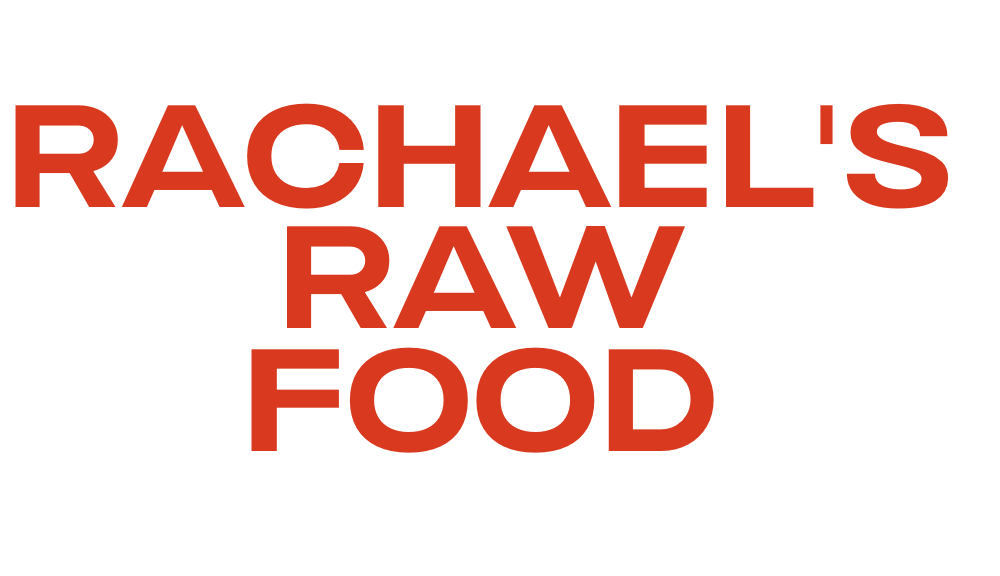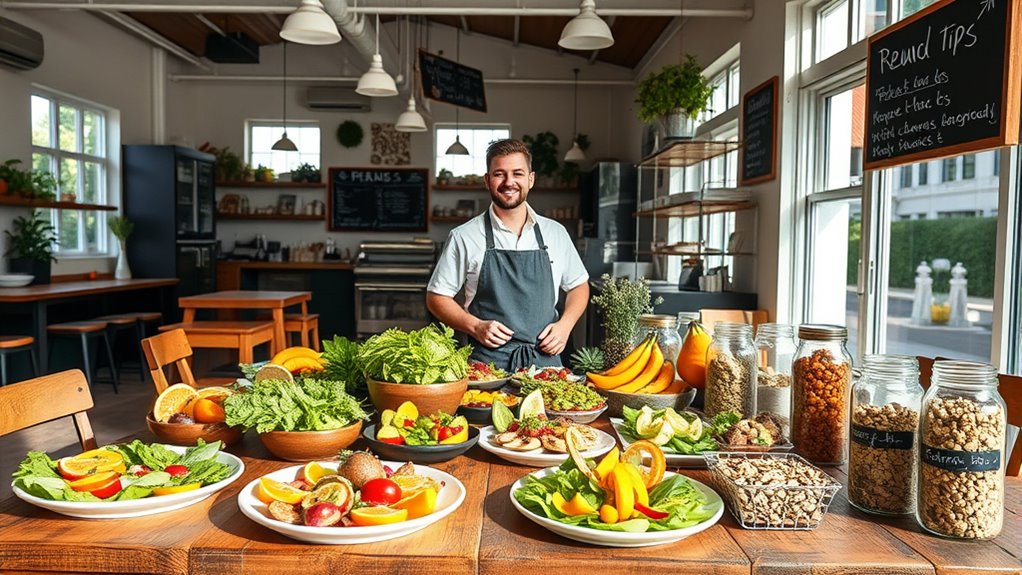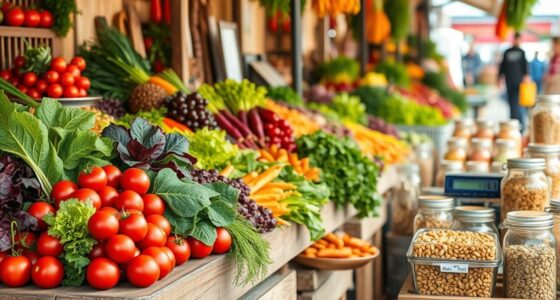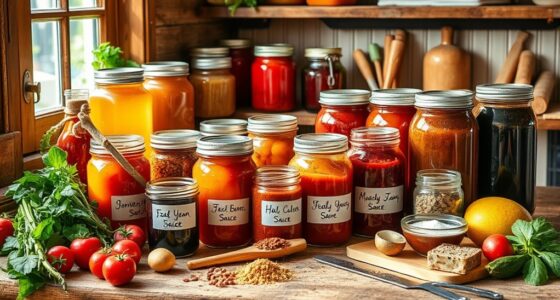When starting a raw food cafe, focus on designing a diverse menu that highlights fresh, organic ingredients and appeals to various tastes. Build strong relationships with local, reliable suppliers to guarantee consistent quality and seasonal variety. Keep your menu simple yet flexible to adapt to ingredient availability and customer preferences. Prioritize transparency and sustainability to build trust. Mastering these essentials will guide your success—continue to explore more tips and insights to refine your approach.
Key Takeaways
- Prioritize sourcing fresh, organic, and local ingredients to ensure high-quality raw food offerings.
- Design a simple yet diverse menu highlighting vibrant, health-focused dishes that cater to various dietary needs.
- Build strong relationships with reliable suppliers to maintain ingredient freshness and consistent supply.
- Use seasonal ingredients to adapt your menu and strengthen supplier partnerships, ensuring variety and sustainability.
- Keep menu flexibility and supplier communication at the core to respond effectively to seasonal changes and customer preferences.
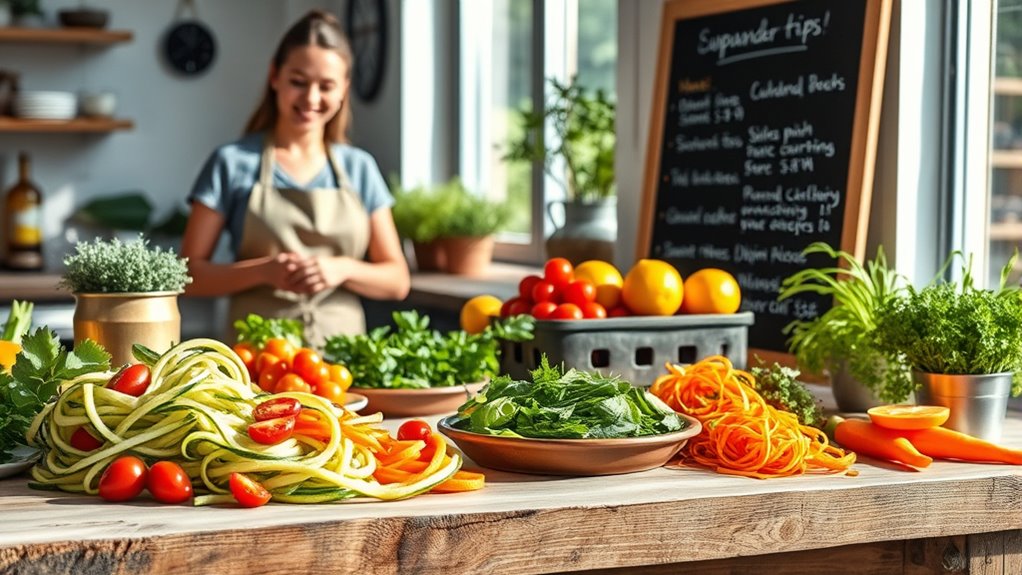
Starting a raw food cafe can be an exciting and rewarding venture if you’re passionate about healthy eating and wellness. One of the first steps you need to focus on is crafting an appealing and balanced menu design. Your menu isn’t just a list of dishes; it’s your chance to showcase the variety and creativity of raw foods, enticing customers to explore new flavors and textures. Think about including a mix of salads, wraps, smoothies, and desserts that highlight fresh, organic ingredients. Keep the menu simple enough to prepare efficiently but diverse enough to cater to different tastes and dietary needs. Remember, a well-thought-out menu can set your cafe apart and encourage repeat visits. When designing it, consider how each item complements others and how it aligns with your overall concept. Use vibrant descriptions to evoke freshness and health benefits, making your offerings irresistible.
Equally important is supplier sourcing, which directly influences the quality of your raw food offerings. You want to partner with reliable, organic, and preferably local suppliers who prioritize freshness and sustainability. Establishing strong relationships with these vendors can ensure you get consistent, high-quality ingredients while potentially reducing costs. When sourcing suppliers, don’t settle for the first options; instead, compare quality, prices, and delivery reliability. Visit farms or markets if possible, to verify how the produce is grown and harvested. Prioritize organic, seasonal produce to maintain the integrity of your raw food menu. Building trust with your suppliers also means you can negotiate better terms and have a more transparent supply chain. This transparency reassures your customers that your food is genuinely fresh and wholesome. Additionally, staying informed about food safety regulations and implementing proper handling procedures is essential to ensure the safety and quality of your offerings.
In the process of setting up, you’ll find that menu design and supplier sourcing are intertwined. A menu crafted around seasonal ingredients allows you to work more closely with local suppliers, which can improve freshness and reduce costs. Conversely, knowing what ingredients you can reliably source helps you tailor your menu to what’s available, ensuring you don’t overpromise or struggle with ingredient shortages. Both aspects require ongoing attention; as your cafe grows, you’ll need to adapt your menu based on seasonal changes and supplier availability. Staying flexible and maintaining strong supplier relationships will help you keep your offerings fresh, exciting, and consistent. Ultimately, a well-designed menu paired with trusted suppliers lays a solid foundation for your raw food cafe’s success, delighting your customers and keeping your business thriving.
Frequently Asked Questions
How Do I Find Reliable Raw Food Suppliers?
To find reliable raw food suppliers, focus on organic sourcing and building strong supplier relationships. Research local farms and certified organic vendors, asking for references and reviews. Visit suppliers personally to assess their quality standards and practices. Establish clear communication and consistency expectations, and negotiate terms that prioritize freshness and reliability. Maintaining good relationships helps guarantee you get the best ingredients, supporting your cafe’s reputation and customer satisfaction.
What Are Effective Marketing Strategies for Raw Food Cafes?
Think of marketing as planting seeds that grow your cafe’s reputation. You should leverage social media to showcase vibrant dishes and engage with your community. Partner with influencers who align with your brand to amplify your reach and attract health-conscious customers. Consistent posting, authentic stories, and collaborations help build trust, turn followers into loyal patrons, and make your raw food cafe a fresh, irresistible destination in your area.
How Do I Price Raw Food Menu Items Competitively?
To price your raw food menu items competitively, you should analyze your costs carefully, including ingredients and prep time, to determine your menu item costs. Use effective pricing strategies such as setting prices slightly below competitors or offering value bundles. Keep in mind that balancing affordability with profit is key; regularly review your prices to adapt to market changes, ensuring your raw food cafe remains attractive to customers while maintaining profitability.
What Permits and Licenses Are Required for a Raw Food Cafe?
Think of permits and licenses as the keys to your raw food cafe’s success. You’ll need a health inspection and food safety permits to guarantee your kitchen meets local standards, preventing any bumps in the road. Check with your city or county health department for specific requirements, which often include food handler’s permits and business licenses. Securing these guarantees your cafe operates legally and safely, earning customer trust from the start.
How Can I Train Staff in Raw Food Preparation Techniques?
You should develop thorough training that covers blending techniques and knife skills to guarantee staff can prepare raw dishes efficiently and safely. Hands-on workshops work best, allowing your team to practice and ask questions. Provide clear demonstrations and step-by-step guides, emphasizing hygiene and safety protocols. Regular refresher sessions help maintain skills, while encouraging feedback can improve your training program and keep your staff confident in their raw food preparation techniques.
Conclusion
As you open your raw food cafe, remember it’s like planting a seed: patience and care nurture growth. Each fresh ingredient is a promise of energy, and your passion is the sun that makes it thrive. Embrace every lesson as water nourishing your journey. With dedication, your cafe will blossom into a vibrant oasis, inspiring others to nourish their bodies and spirits—just like a tree rooted deep, reaching for the sunlight, your dream will flourish.
